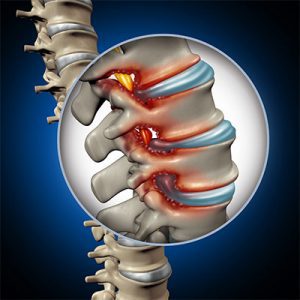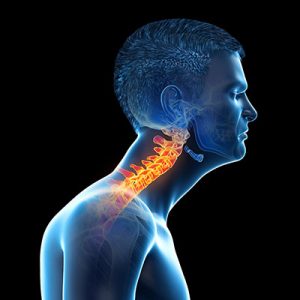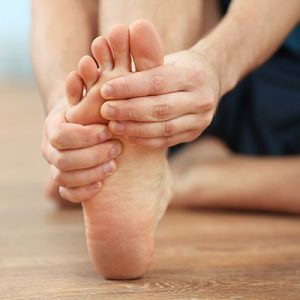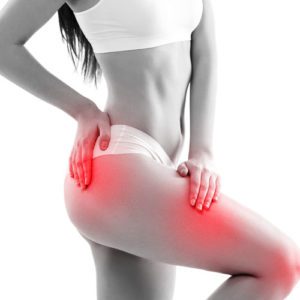Understanding Arthritis: Causes, Prevention, and Treatment
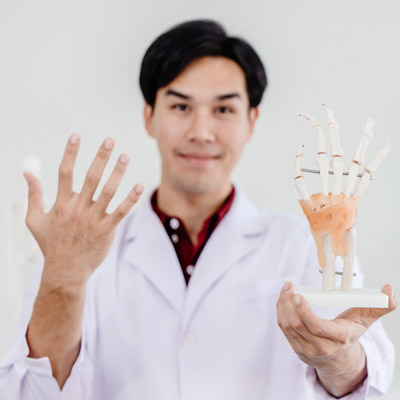
Arthritis is a condition that affects millions of individuals worldwide, significantly impacting the quality of life and mobility. Whether you are an arthritis sufferer, a wellness enthusiast, or someone dedicated to maintaining optimal health, understanding what causes arthritis and how to prevent or manage it is crucial.
In this comprehensive guide, we will explore the causes of arthritis, the phenomenon of joints becoming bone on bone over time, and the lifestyle factors that play a role in joint health. We will also provide valuable insights from Dr. Samantha Coleman of the ChiroSolutions Center in Virginia Beach, VA, who is an expert chiropractor utilizing Chiropractic BioPhysics® (CBP) to treat the entire neuromusculoskeletal system.
Introduction to Arthritis
Defining Arthritis
Arthritis is a broad term used to describe inflammation of the joints, which can cause pain, stiffness, swelling, and decreased range of motion. There are over 100 different types of arthritis, with osteoarthritis (OA) and rheumatoid arthritis (RA) being the most common.
Prevalence and Impact
According to the Centers for Disease Control and Prevention (CDC), approximately 54 million adults in the United States have doctor-diagnosed arthritis, and this number is expected to rise. Arthritis is a leading cause of disability and can severely impair daily activities and overall well-being.
Understanding the Causes
Forms of Arthritis
- Osteoarthritis (OA): Often referred to as “wear and tear” arthritis, OA occurs when the protective cartilage that cushions the ends of bones wears down over time. This can lead to joint pain, stiffness, and decreased flexibility.
- Rheumatoid Arthritis (RA): RA is an autoimmune disorder where the immune system mistakenly attacks the body’s tissues, particularly the synovium (the lining of the membranes that surround the joints). This causes chronic inflammation and can eventually result in joint damage.
- Other Types: There are other forms of arthritis, such as psoriatic arthritis, gout, and lupus, each with its unique causes and characteristics.
Factors Contributing to Joint Degeneration
Joint degeneration can be influenced by several factors:
- Genetics: A family history of arthritis can increase the likelihood of developing the condition.
- Age: The risk of arthritis increases with age, particularly for osteoarthritis.
- Gender: Women are more likely to develop autoimmune forms of arthritis, such as RA.
- Injury: Joint injuries can accelerate the wear-and-tear process, leading to OA.
- Obesity: Excess weight puts additional stress on weight-bearing joints, contributing to joint degeneration.
The Bone on Bone Phenomenon
Joint Deterioration Over Time
As arthritis progresses, the cartilage that cushions the joints continues to deteriorate. In severe cases, this can lead to bone-on-bone contact, where the bones in the joint rub directly against each other. This contact can cause intense pain, inflammation, and further joint damage.
Understanding the Process
- Cartilage Breakdown: Cartilage is a smooth, rubbery tissue that allows for easy joint movement. When it breaks down, bones lose their protective buffer.
What Causes Cartilage Breakdown?
The deterioration of cartilage, a hallmark of arthritis, can result from a variety of factors:
- Wear and Tear: Repetitive stress on the joints from daily activities or occupational hazards can erode cartilage over time. This is a primary cause of osteoarthritis.
- Genetic Factors: Certain genetic predispositions can affect the structural integrity of cartilage or its ability to repair itself, making some individuals more susceptible to cartilage breakdown.
- Inflammation: Chronic inflammation, as seen in rheumatoid arthritis, can contribute to cartilage damage. The immune system’s attack on joint tissues leads to the release of enzymes that degrade cartilage.
- Joint Injuries: Acute injuries such as ligament tears, fractures, or dislocations can damage cartilage directly or alter the mechanics of the joint, leading to accelerated wear and tear.
- Obesity: Excess body weight places additional pressure on weight-bearing joints, such as the knees and hips, increasing the mechanical stress on cartilage and speeding up its degradation.
- Aging: The natural aging process involves a gradual decline in the cartilage’s ability to repair itself. The water content in cartilage decreases with age, making it less resilient and more prone to damage.
- Metabolic Disorders: Conditions such as diabetes and high cholesterol can negatively affect cartilage health. For example, high blood sugar levels can lead to the formation of advanced glycation end products (AGEs) that disrupt collagen in cartilage.
Understanding these factors is key to developing preventive strategies and treatment plans to protect joint health and preserve cartilage integrity.
- Synovial Fluid Reduction: Healthy joints contain synovial fluid that lubricates and nourishes the cartilage. Arthritis can reduce the production of this fluid, exacerbating joint friction.
Causes of Synovial Fluid Reduction
Synovial fluid is crucial for maintaining joint health as it provides lubrication, reduces friction, and nourishes the cartilage. Several factors can lead to a reduction in synovial fluid, exacerbating joint problems:
- Chronic Inflammation: Ongoing inflammation, as seen in rheumatoid arthritis, can disrupt the normal production of synovial fluid. Inflammatory cytokines can damage the synovial membrane, impairing its ability to produce adequate fluid.
- Age: As we age, the cells responsible for producing synovial fluid may become less efficient. This natural decline in synovial fluid production can contribute to joint stiffness and decreased range of motion.
- Dehydration: Adequate hydration is essential for the production of synovial fluid. Chronic dehydration can reduce the amount of fluid available in the joints, leading to increased friction and wear.
- Injury: Trauma to the joint, such as sprains or fractures, can damage the synovial membrane and reduce synovial fluid production. This can lead to temporary or long-term joint issues.
- Metabolic Conditions: Conditions like diabetes can affect the health of the synovial membrane. Elevated blood sugar levels can cause glycation of the membrane proteins, impairing their function and reducing fluid production.
- Nutritional Deficiencies: Deficiencies in vital nutrients such as Omega-3 fatty acids, vitamins, and minerals can affect synovial fluid production. A lack of these nutrients can compromise the overall health of the joint tissues.
- Obesity: Excess body weight increases mechanical stress on joints, and the associated low-grade systemic inflammation can impair synovial fluid production. Additionally, adipose tissue can produce pro-inflammatory cytokines that negatively impact the joints.
Recognizing these causes of synovial fluid reduction is essential for managing arthritis and other joint-related conditions. Addressing these factors through a combination of medical treatment, lifestyle adjustments, and proper nutrition can help maintain healthy joint function and alleviate symptoms.
- Bone Spurs: As the body attempts to repair the damaged cartilage, it may produce bone spurs, which can further restrict joint movement.
What Causes Bone Spurs?
Bone spurs, also known as osteophytes, are bony projections that develop along the edges of bones, particularly where bones meet in the joints. These outgrowths are a result of the body’s attempt to repair itself by increasing the surface area of the joint to better distribute weight and reduce pressure on the deteriorating cartilage. The formation of bone spurs can be triggered by various factors, including:
- Osteoarthritis (OA): This is the most common cause of bone spurs. As cartilage wears away due to OA, bones may form spurs to compensate for the lost cushioning and improve joint stability.
- Degenerative Disc Disease: In the spine, degenerative changes in the intervertebral discs may lead to bone spur formation. These spurs can impinge on nerves, causing pain and other symptoms.
- Repetitive Stress: Joints subjected to continuous stress from repetitive movements or activities may develop bone spurs as a protective response to the excessive pressure.
- Aging: The natural aging process can lead to wear and tear on the joints, prompting the formation of bone spurs as part of the body’s repair mechanism.
- Inflammatory Conditions: Conditions such as rheumatoid arthritis and ankylosing spondylitis involve chronic inflammation of the joints, which can stimulate abnormal bone growth and spur formation.
- Joint Instability: Ligament injuries or congenital joint deformities that lead to unstable joints can cause the body to produce bone spurs to stabilize the area.
- Poor Posture: Maintaining poor posture over time can place abnormal stress on the joints, particularly in the spine, leading to the development of bone spurs.
Understanding the underlying causes of bone spurs is crucial for effective treatment and management. Addressing the root causes, alongside medical and lifestyle interventions, can help alleviate symptoms and prevent further joint damage.
Lifestyle Factors
Diet and Nutrition
A balanced diet rich in anti-inflammatory foods can help manage arthritis symptoms and improve joint health. Key dietary considerations include:
- Omega-3 Fatty Acids: Found in fatty fish, flaxseeds, and walnuts, omega-3s can reduce inflammation.
- Antioxidants: Fruits and vegetables rich in antioxidants help combat oxidative stress in the joints.
- Low-Processed Foods: Reducing processed foods and sugars can decrease inflammation markers.
Exercise and Physical Activity
Regular exercise is essential for maintaining joint flexibility and overall health. Consider low-impact activities such as:
- Swimming: The buoyancy of water reduces joint stress while promoting movement.
- Walking: A simple yet effective way to keep joints active.
- Strength Training: Building muscle around joints provides added support and reduces strain.
Daily Habits
Small adjustments in daily habits can make a significant difference in managing arthritis:
- Ergonomic Adjustments: Ensure your workspace and home environment support joint health.
- Regular Movement: Avoid prolonged periods of inactivity; take breaks to move and stretch.
- Proper Footwear: Supportive shoes can reduce stress on knee and hip joints.
Expert Insights: Dr. Samantha Coleman on Chiropractic BioPhysics®
The Role of Chiropractic BioPhysics®
Dr. Samantha Coleman, an expert chiropractor at the ChiroSolutions Center in Virginia Beach, VA, utilizes Chiropractic BioPhysics® (CBP) to address the root causes of arthritis and improve overall joint health. CBP is a research-based approach that focuses on:
- Spinal Alignment: Correcting spinal misalignments to improve nervous system function and reduce inflammation.
- Postural Correction: Enhancing posture to alleviate joint stress and improve mobility.
- Holistic Care: Addressing the entire neuromusculoskeletal system for comprehensive treatment.
Benefits of CBP for Arthritis Sufferers
Patients undergoing CBP treatments often experience reduced pain, improved joint function, and enhanced quality of life. By focusing on spinal health, CBP aims to create a ripple effect that benefits the entire body.
Prevention Strategies
Maintain a Healthy Weight
Keeping your weight within a healthy range can significantly lower the risk of developing OA. Excess weight puts additional stress on joints, particularly the knees, hips, and spine.
Stay Active
Engaging in regular physical activity promotes joint flexibility and strengthens the muscles supporting the joints. Aim for at least 150 minutes of moderate-intensity exercise per week.
Protect Your Joints
Avoid activities that put unnecessary strain on your joints. Use proper techniques when lifting heavy objects, and take breaks to rest joints during repetitive tasks.
Adopt a Joint-Friendly Diet
Incorporate foods rich in omega-3 fatty acids, antioxidants, and vitamins C and D into your diet. These nutrients support joint health and reduce inflammation.
Treatment Options
Conventional Treatments
- Medications: Nonsteroidal anti-inflammatory drugs (NSAIDs), corticosteroids, and disease-modifying antirheumatic drugs (DMARDs) are commonly used to manage arthritis symptoms.
- Physical Therapy: Guided exercises and therapies can improve joint function and reduce pain.
- Surgery: In severe cases, joint replacement surgery may be necessary to restore mobility and alleviate pain.
Alternative Treatments
- Chiropractic BioPhysics®: As discussed, CBP offers a holistic approach to managing arthritis by addressing spinal alignment and overall neuromusculoskeletal health.
- Acupuncture: This traditional Chinese medicine practice can help reduce pain and improve joint function.
- Massage Therapy: Regular massage can alleviate muscle tension and improve circulation around the joints.
Key Takeaways
Understanding Arthritis: Awareness of the causes and progression of arthritis is the first step in preventing and managing the condition.
- Lifestyle Choices Matter: Diet, exercise, and daily habits play a significant role in maintaining joint health and reducing the risk of arthritis.
- Seek Expert Guidance: Consulting with professionals like Dr. Samantha Coleman and exploring treatments like Chiropractic BioPhysics® can provide effective relief and improve quality of life.
Take control of your joint health today. Whether you are looking to prevent arthritis or manage existing symptoms, adopting a proactive approach can make all the difference. For personalized care and expert insights, consider reaching out to Dr. Samantha Coleman at the ChiroSolutions Center in Virginia Beach, VA, and explore the benefits of Chiropractic BioPhysics®.
By staying informed and making conscious lifestyle choices, you can maintain healthy joints and enjoy a life free from the limitations of arthritis.

Similar Posts
Free Initial Consultation
Stop living with pain and discomfort. Contact us to schedule your free initial appointment.
Request an appointment online, or call:
757-271-0001



